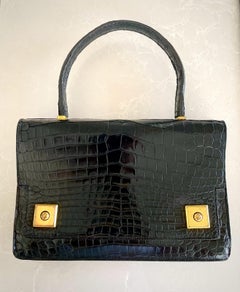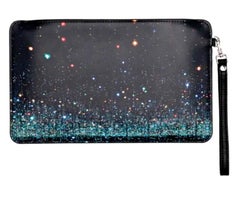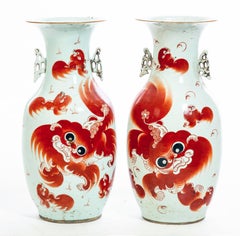Hermès More Art
For Hermès, what began as a maker of leather equestrian goods for European noblemen would eventually grow into one of the most storied fashion labels in the world. In 1837, German-born French entrepreneur Thierry Hermès opened a saddle and harness purveyor in Paris. Gradually, the house extended into accessories and luggage for its riders, and today, in paying homage to its origins, the family-run luxury brand resurfaces horse motifs in everything from clothing and modernist jewelry to pillows and handbags.
The first top-handled bag ever produced by Hermès was the Haut à courroies, which made its debut in 1892. A tall bag secured with a folded leather flap (fastened with bridle-inspired straps), it was designed to transport riding boots and a harness.
As the world made the switch from horse to automobile, the bag adapted, becoming a multifunctional travel satchel instead of a designated saddlebag. Today, 120 years later, the HAC remains in Hermès’s line — and its distinctive flap and clasping straps have laid the groundwork for some of the house’s other iconic bags.
In the 1930s, Robert Dumas (son-in-law to Émile-Maurice Hermès, Thierry’s grandson) designed a smaller, trapezoidal take on the flap bag with a handle and two side straps. Later, actress Grace Kelly, then engaged to Prince Rainier of Monaco, is said to have used one of these bags to conceal her pregnancy during the 1950s. Because she was photographed constantly, the coverage catapulted her handbag to international popularity.
In 1977, Hermès officially renamed the model for her, and the Kelly bag was born. Each Kelly bag takes between 18 and 25 hours to produce, and its 680 hand stitches owe solely to one Hermès artisan.
Robert Dumas was also responsible for another one of the brand’s most iconic offerings: the launch of its first silk scarf on the occasion of Hermès’s 100th anniversary in 1937. Based on a woodblock designed by Dumas and printed on Chinese silk, the accessory was an immediate hit.
Today, vintage Hermès scarves, typically adorned in rich colors and elaborate patterns, serve many functions, just as they did back then. Well-heeled women wear it on their heads, around their necks and, in a genius piece of cross-promotion, tied to the straps of their Hermès bags. Kelly even once used one as a sling for her broken arm.
In 1981, Robert Dumas’s son Jean-Louis Dumas, then Hermès chairman, found himself sitting next to French actress and musician Jane Birkin on a plane, where she was complaining about finding a suitable carryall for the necessary accoutrements of motherhood. After the two travelers were properly introduced, Birkin helped design Jean-Louis’s most famous contribution to the Hermès canon: the Birkin bag, a roomy, square catchall with the HAC’s trademark leather flap top and the addition of a lock and key.
Owing to the brand’s legendary commitment to deft, handcrafted construction, the Birkin is an investment that is coveted by collectors everywhere.
While the Kelly and Birkin may be standouts, gracing the arms of everyone from royal heiresses to hip-hop stars in the past few decades, the handbags are but a small part of Hermès’s fashion offerings.
Since the 1920s, the brand has produced some of the most desirable leather goods in the world. There’s the Constance bag, a favorite of Jacqueline Kennedy, the recently relaunched 1970s-era Evelyne and, on the vintage market, a slew of designs dating back to the 1920s.
Good design never goes out of style. Find a variety of vintage Hermès handbags, day dresses, shoes and more on 1stDibs.
Late 20th Century Hermès More Art
Leather
Late 20th Century Rococo Hermès More Art
Ceramic
2010s Pop Art Hermès More Art
Leather, Polyester, Mixed Media
Early 20th Century Qing Hermès More Art
Porcelain, Paint
15th Century and Earlier Tribal Hermès More Art
Clay, Terracotta
Late 19th Century Rococo Hermès More Art
Silver
Late 20th Century Rococo Hermès More Art
Tapestry
21st Century and Contemporary Contemporary Hermès More Art
Porcelain, Digital
Early 2000s Hermès More Art
Leather
21st Century and Contemporary Contemporary Hermès More Art
Enamel
2010s Pop Art Hermès More Art
Leather, Screen
21st Century and Contemporary Contemporary Hermès More Art
Enamel
Late 20th Century Rococo Hermès More Art
Tapestry
Early 2000s Contemporary Hermès More Art
Ceramic, Leather
Hermès more art for sale on 1stDibs.
- What is a Hermes Picotin?1 Answer1stDibs ExpertApril 5, 2022A Hermes Picotin handbag is one of the brand’s signature bags with a minimalist approach that was inspired by a horse’s feedbag. The name comes from a French term for the amount of oats given to a horse to eat. This is an unlined bag, very simple and understated. Shop a collection of vintage and new Hermes bags, clothing and accessories from some of the world’s top boutiques on 1stDibs.
- Does Hermes have backpacks?1 Answer1stDibs ExpertApril 5, 2022Yes, the modern backpack is an essential part of any handbag designer’s repertoire—even Hermes who has some delightfully functional backpacks to choose from. Find vintage and contemporary Hermes accessories from some of the world’s top boutiques on 1stDibs.
- What is Hermes RTW?1 Answer1stDibs ExpertApril 5, 2022In the world of fashion, whether it’s Hermes or any brand, RTW stands for ready-to-wear. Sometimes also called the French term pret-a-porter, this clothing is made for the general market and sold in stores. There is no customizing or altering the fit, the clothes are simply bought as is. Shop a collection of vintage and new Hermes bags, clothing and accessories from some of the world’s top boutiques on 1stDibs.
- What is a Roman herm?1 Answer1stDibs ExpertApril 5, 2022A Roman herm is a squared off stone pillar that is topped with a carved head. Originally, they represented the god Hermes, but as time went on herms were used to depict any number of people, real and fictitious, as well as animals and mythological creatures. On 1stDibs, find a collection of herms and other statues from some of the world’s top sellers.
- What is the best Hermes color?1 Answer1stDibs ExpertMarch 22, 2022What Hermès color is the best is largely a matter of personal preference. Permanent colors used in the luxury brand's handbag collection include Noir black, Gold and gray-brown Etoupe. In addition, Hermès regularly produces bags in dark red Rouge H and pinkish-cream Parchemin. You'll find a large selection of Hermès bags on 1stDibs.
- 1stDibs ExpertAugust 17, 2021The most expensive Hermès bag is the Hermès Himalaya Kelly Birkin Bag. The first top-handled bag ever produced by Hermès was the Haut à courroies, which made its debut in 1892. Today the wide range of iconic handbags designed by Hermès includes the Kelly, the Birkin, the Constance and more. Shop Birkin bags on 1stDibs.
- 1stDibs ExpertApril 5, 2022Hermes scarves come in a variety of shapes and sizes. There are small scarves and larger ones, rectangles and even pocket squares, all from the luxury brand Hermes. Find a collection of vintage and modern Hermes scarves on 1stDibs.
- What is Hermes orange called?1 Answer1stDibs ExpertMarch 22, 2022Hermès orange is called Orange H. Sometimes, you may see it labeled as Classic Orange. The color is a vibrant true orange. It is not as dark as Potiron and has less of a yellow tone than Gold. You'll find a large collection of Hermès bags on 1stDibs.
- How much is a Hermes scarf?1 Answer1stDibs ExpertFebruary 22, 2021An Hermès scarf can range in value depending on condition, rarity, and style. On 1stDibs.com, you can purchase a Hermès scarf for $195 - $7,444.
- How much is a Hermes bag?1 Answer1stDibs ExpertFebruary 22, 2021The price of a Hermès bag can vary depending on color, condition, rarity, style and age. Owing to its limited availability and quality craftsmanship, a Birkin bag can be a very costly bag made by Hermès — an example of this accessory sold in 2017 for nearly $400,000 at an auction in Hong Kong. On 1stDibs.com, you can find a variety of Hermès bags for a range of prices.
- Where are Hermes boxes made?1 Answer1stDibs ExpertApril 5, 2022Hermès boxes are made in France by seven different cardboard manufacturers. Hermès iconic packaging has become a collector’s item in its own right, along with the luxury brand’s wide array of clothing and accessories. Shop vintage and contemporary Hermès from some of the world’s top sellers on 1stDibs.
- Did Hermes make typewriters?1 Answer1stDibs ExpertApril 5, 2022Not to be confused with luxury French fashion house Hermès Paris, Hermes typewriters were manufactured by Paillard-Bolex throughout the early 20th century. Hermes typewriters were initially a side project from the Swiss watch manufacturer looking to capitalize off the lucrative typewriting market. Shop a selection of vintage typewriters, including Hermes, on 1stDibs.
- How much is an Hermes Birkin?1 Answer1stDibs ExpertOctober 19, 2021A Hermés Birkin bag is one of the costliest bags in the world. A single bag might cost anywhere from $30,000 to $500,000. It is regarded as an instantly recognizable handcrafted and extremely limited-edition bag. Jane Birkin, an actress and singer, was the inspiration for the name. Shop a range of original Hermès Birkin bags on 1stDibs.
- How much is Hermes Lindy?1 Answer1stDibs ExpertOctober 12, 2021How much a Hermès Lindy bag costs depends on size, features and more. It typically costs $4,500 to more than $16,000 and is said to be one of the most coveted brands for bags. Shop a variety of Hermès Lindy bags today on 1stDibs.
- How much are Hermes belts?1 Answer1stDibs ExpertFebruary 22, 2021The price of a Hermès belt is dependent on the style, condition, age, and rarity. On 1stDibs.com, you can purchase a Hermès belt at a wide range of prices.
- What is Hermes Evelyne TPM?1 Answer1stDibs ExpertApril 5, 2022The Hermes Evelyne handbag comes in four sizes, 16 cm is the smallest and is referred to as the TPM. The abbreviation TPM stands for Très Petit Modèle, which this bag is, as it’s just big enough to hold a phone and a couple of other accessories. Shop a collection of vintage and new Hermes bags, clothing and accessories from some of the world’s top boutiques on 1stDibs.
- What is epsom leather hermes?1 Answer
 ChicjoySeptember 24, 2020
ChicjoySeptember 24, 2020Epsom is a stamped or embossed calf leather (as opposed to being a grained leather like Togo or Clemence, or a smooth leather like Swift or Box). It is lightweight and stiff; thus Epsom is known for its ability to retain structure over time. Epsom is the primary leather used to make Sellier Kelly and Birkin bags which feature outside stitching on its edges which result in a crisp and sharp line. Epsom is more rain-resistant than other calf leathers.
- Can Hermes bracelets get wet?1 Answer1stDibs ExpertMarch 22, 2022Yes, Hermès bracelets can get reasonably wet. The precious metals used to craft the jewelry resists the effects of water, so you can wash your hands or wander rainy streets without worry. However, the luxury designer recommends that you take your bracelet off before bathing, swimming, gardening or performing housekeeping tasks. Find a large collection of Hermès bracelets on 1stDibs.
- 1stDibs ExpertApril 5, 2022Yes, Hermes dust bags often come in orange or light beige, with both types featuring a dark brown Hermes logo. Hermes includes dust bags with its shoes and handbags to protect the items from dust as the name implies, but also to avoid sun exposure, excess moisture and color transfer. Shop a collection of authentic Hermes shoes and bags from some of the world’s top boutiques on 1stDibs.
- Does Hermes ever go on sale?1 Answer
 ChicjoySeptember 24, 2020
ChicjoySeptember 24, 2020Select Hermes goods go on sale twice a year in Paris, but Birkins – being highly coveted–are not known to be found at the sale.



